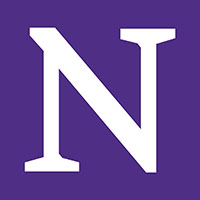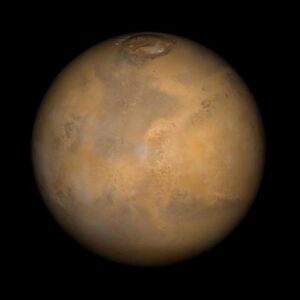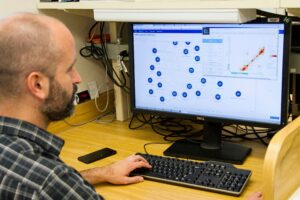
Nearly a decade has passed since an international team of scientists, including astrophysicists from Northwestern University, first detected gravitational waves. This historic discovery confirmed Albert Einstein’s century-old prediction of these subtle quivers in space-time and the existence of merging black holes. Now, the team has received perhaps the best anniversary gift possible.
By analyzing the frequencies of gravitational waves from a merger between two black holes, the team has verified Stephen Hawking’s 1971 black-hole area theorem, which states that the total surface area of black holes cannot decrease. The signal, detected by the U.S. National Science Foundation Laser Interferometer Gravitational-Wave Observatory (NSF LIGO), Virgo, and KAGRA (LVK) collaboration, is the clearest to date. This finding sheds further light on the mysterious nature of black holes, one of the universe’s most extreme objects.
The study was published on September 10 in the Physical Review Letters, with contributions from about a dozen Northwestern coauthors. “It’s remarkable to celebrate nearly a decade since our first detection with a discovery that confirms one of Stephen Hawking’s famous predictions,” said Northwestern’s Vicky Kalogera, a senior member of the LIGO Scientific Collaboration (LSC). “This is exactly the kind of breakthrough that shows how gravitational-wave astronomy is reshaping our understanding of black holes, the universe, and our place within it.”
A Decade of Advancement
Before the initial detection of gravitational waves in 2015, astrophysicists relied solely on light waves, such as X-rays, optical light, infrared radiation, and radio waves, to detect distant objects. Then, on September 14, 2015, LIGO detected a signal carrying information about a pair of remote black holes that had spiraled together and merged. This signal had traveled approximately 1.3 billion years to reach Earth at the speed of light, marking the first time a cosmic event was witnessed through its gravitational warping of space-time.
“Almost everything we currently know about the universe has been discovered with light of some kind,” Kalogera said in 2015. “Gravitational waves carry completely new information about black holes and other cosmic objects, and they will unlock a new part of the universe.”
Since that initial achievement, gravitational wave observations have provided about 300 measurements of compact-object masses. Other LVK scientific discoveries include the first detection of collisions between two neutron stars, mergers between one neutron star and one black hole, asymmetrical mergers, and the discovery of the lightest black holes known. These findings challenge the idea of a “mass gap” between neutron stars and black holes.
Northwestern’s Role in Landmark Discoveries
Northwestern and its Center for Interdisciplinary Exploration and Research in Astrophysics (CIERA) played significant roles in many landmark discoveries. Kalogera and Wen-Fai Fong’s groups were instrumental in the first detection of a collision between two neutron stars. Fred Rasio’s group pioneered the understanding of how dense star clusters can naturally form very massive black hole binaries, potentially producing some of the heaviest gravitational-wave mergers observed.
Kalogera and her team also made major contributions to the discovery, analysis, and astrophysical interpretation of mystery compact objects in the purported “mass gap” between neutron-star and black-hole masses. Their work has called into question whether the gap is a true feature of nature, offering a verifiable explanation for why the gap appears in X-ray sources, pointing to observational biases.
Verifying Hawking’s Theorem
With improved sensitivity, LVK recently discovered a black hole merger dubbed GW250114. Similar to the first-detected black-hole merger in 2015, GW250114 involved two colliding black holes about 1.3 billion light-years away from Earth. Thanks to a decade of technological advances to reduce noise, the new signal was dramatically clearer, providing the best observational evidence to date to verify Stephen Hawking’s black hole area theorem.
When black holes merge, multiple factors are at play. The holes’ masses combine to increase the overall surface area, but they also lose energy in the form of gravitational waves. The merger can cause the combined black hole to increase its spin, shrinking the surface area. Despite these competing factors, Hawking proved mathematically that the total surface area must still grow in size.
“This is the first incontrovertible confirmation of the law,” said Sylvia Biscoveanu, a NASA Einstein Fellow at CIERA at the time of the work and now an assistant professor at Princeton University. “This tells us that the null energy condition, weak cosmic censorship, and General Relativity all hold, which means that astrophysical black holes are indeed the simple objects posited theoretically many decades before they were observationally confirmed.”
Looking Ahead
In the coming years, LVK’s team aims to further fine-tune their technology, expanding its reach deeper into space. They also plan to use their knowledge to build another gravitational-wave detector, LIGO India. Having a third LIGO observatory will greatly improve the precision with which the LVK network can localize gravitational-wave sources.
Looking further into the future, the U.S. gravitational-wave community is developing a concept for an even larger detector, called Cosmic Explorer, which would have arms 40 kilometers long. Kalogera leads the expert advisory committee that reviewed and recommended this project to the NSF. A European project, called Einstein Telescope, plans to build one or two huge underground interferometers with arms of more than 10 kilometers long. Observatories on this scale would allow scientists to hear black hole mergers all the way back to the earliest times in the universe’s origins.
“Over the past 10 years, Northwestern and CIERA scientists have contributed to every major milestone in gravitational-wave astronomy,” Kalogera said. “It’s incredibly rewarding to see how our contributions, together with our partners around the globe, continue to push the boundaries of science.”





